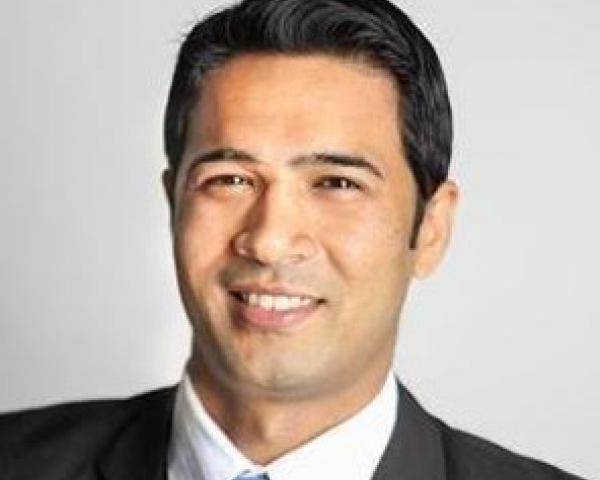On June 26, Waymo (Google’s autonomous car firm), signed a deal under which Avis Budget Group will provide “fleet support and maintenance services” to Phoenix-area Waymo vehicles. Waymo uses Chrysler Pacifica minivans to autonomously shuttle Phoenix residents around town. Its first fleet of 100 minivans quickly grew into an order for 500 more.
The Waymo/Avis agreement may only be a pilot, but the implications are enormous. Not unlike standard cab companies, Waymo realized that a fleet of autonomous vehicles would need cleaning and maintenance throughout the day and storage throughout the night. When practical matters like auto cleaning and storage become news enough for a press release, something big is going on.
Here are some fun facts:
- According to USA Today, Avis’ stock rose 14% on the news.
- The Chrysler Pacifica was chosen, in large part, because it could close its own doors. Waymo usage experts theorized that riders might often hop out and forget to close the door.
- Within hours of the Waymo announcement, Apple likewise unveiled a deal where Hertz Global would manage its autonomous fleet.
Autonomous vehicles have picked up the pace of disruption over the last two years. What will life be like when the Autonomy of Things takes on many of our everyday behaviors or occupations, like driving? Will we be safer? Will we need insurance? Will auto manufacturers cover accidents via product liability? Who will cover bodily injury or property damage? How will risk products be changed to fit this new model? Is there an insurance right-road to surviving autonomy?
See also: The Evolution in Self-Driving Vehicles
Is Autonomy Impact Still Underrated?
There has been a lot of talk and certainly a wealth of words written on the impact of auto autonomy, and safety is at the top of the concerns and promises of autonomous vehicles. Insurers are, of course, focused on how autonomous vehicles might cause a decline in the need for auto insurance.
The pace of development, rollout, experimentation and expansion of autonomous vehicles has far exceeded original expectations. In his blog, Peter Diamandis (XPrize Founder) noted that a former Tesla and BMW executive said that self-driving cars would
start to kill car ownership in just five years. John Zimmer, the cofounder and president of Lyft, said that
car ownership would “all but end” in cities by 2025.
The Wall Street Journal reported in July 2016 that auto insurance represents nearly a third of all premiums for the P&C industry, with projections that 80% could evaporate over the next few decades as autonomous vehicles are introduced, some of them replacing legacy vehicles and some created for shared transportation. At the same time,
U.S. government support strengthened in September 2016 when federal auto safety regulators released their first set of guidelines, sending a clear signal to automakers that the door was wide open for driverless cars and betting that the nation’s highways will be safer with more cars driven by machines instead of people.
Those statements, among others, might cause some scrambling. Manufacturers are working frantically to partner with AI providers, cab services and ridesharing services such as Uber, Lyft and Waymo. Naysayers will note that rural areas will be highly unlikely to use autonomous vehicles soon, and it’s true that the largest impact may be in urban areas. But if car ownership were even cut by 5% by 2030, a tremendous number of auto manufacturers and auto insurers would be affected.
Autonomy and its insurance impact isn’t limited to personal autos. Truck company Otto is testing self-driving commercial trucks — a necessary automation that could help alleviate the growing lack of truck drivers. Husqvarna has several models of autonomous lawn mowers on the market. Yara and Rolls Royce are among companies working on autonomous ships. Case, John Deere and Autonomous Tractor Corporation have all been developing driverless tractors.
In nearly every one of these cases, there are safety benefits and disruptive insurance implications, but there are also revenue growth opportunities for those that think more broadly and “outside the box.” From developing partnerships with automotive companies to leveraging the autonomous vehicle data for new services, each offers alternative revenue streams to counter the decline of traditional auto insurance. The key is experimenting with these technologies to find alternative “products and services” and develop an ecosystem of partners to support this, before the competition does.
Share and Transportation as a Service — Insurers May Like
In our report,
A New Age of Insurance: Growth Opportunity for Commercial and Specialty Insurance in a Time of Market Disruption, we cite a report from RethinkX,
The Disruption of Transportation and the Collapse of the Internal-Combustion Vehicle and Oil Industries, which says that by 2030 (within 10 years of regulatory approval of autonomous vehicles), 95% of U.S. passenger miles traveled will be served by on-demand autonomous electric vehicles owned by fleets, not individuals, in a new business model called “transport-as-a-service” (TaaS). The report says the approval of autonomous vehicles will unleash a highly competitive market-share grab among existing and new pre-TaaS (ride-hailing) companies in expectation of the outsized rewards of trillions of dollars of market opportunities and network effects.
Welcome to the adolescence of the sharing economy and transportation as a service. Autonomy isn’t the only road for vehicle progress. Vehicle sharing is growing and will remain in vogue for some time. Just as Airbnb and HomeAway have given rise to new insurance products, Zipcar and Getaround and Uber have given rise to new P&C products.
At the same time, a merging of public and private transportation and a pathway to free transportation is in the early stages of being created in the TaaS model. This will shift risk from individuals to commercial entities, governments or other businesses that provide the public transportation, creating commercial lines product opportunities beyond traditional “public transportation.”
Vehicle users, whether they are riders, borrowers, sharers or public entities, are going to need innovative coverage options. Tesla and Volvo may be promising some level of auto coverage for owners of autonomous vehicles, but that kind of blanket coverage is likely to mimic an airline’s coverage of passengers and cargo — it will be limited. Those who lend their vehicle, through a software-based consolidator, such as Getaround, will need coverage that goes beyond their auto policy.
In the past few weeks, we’ve also seen how cyber attacks can undermine freight and shipping, not to mention systems. Nearly all of these service-oriented options will require new types of service-level coverage. Autonomous freight may be safer in transit, but in some ways it may also be less secure.
The lessons appear to be found in brainstorming. Technology is breeding diversity in service use and ownership. There will be new coverage types and new insurance products needed.
See also: Will You Own a Self-Driving Vehicle?
Up Next … Flying Vehicles
Remember the movie "Back to the Future" and the Jetsons flying cars that were so cool? Well, they are quickly becoming a cool reality. A June 2017 Forbes article says flying cars are moving rapidly from fiction to reality, with the first applications of flying vehicles for recreational activities in the next five years. The article says that, in the past five years, at least eight companies have conducted their first flight tests, and several more are expected to follow suit, indicative of the frenzied activity in this space.
Companies such as
PAL-V,
Terrafugia,
Aeromobil,
Ehang,
E-Volo,
Urban Aeronautics,
Kitty Hawk and
Lilium Aviation completed test flights of their flying car prototypes, with PAL-V going further by initiating pre-sales of its Liberty Pioneer model flying car, which the company aims to deliver by the end 2018. This sounds like Tesla and its pre-sales move!
Not to be left behind … ride-sharing companies are aggressively entering the space. Uber launched the
Uber Elevate program, with a focus on making flying vehicles transport a reality by bringing together government agencies, vehicle manufacturers and regulators. Google and Skype are entering the space by investing in start-ups: Google in Kitty Hawk and Skype in Lilium Aviation. Not to be left behind, Airbus has unveiled a number of flying car concepts, with plans to launch a personal flying car by 2018. Airbus also plans to build a mass transit flying vehicle…the potential next TaaS option.
So, it pays for insurers to keep their attention on autonomous vehicle trends … because it is more than the personal autonomous vehicle … it is the transformation of the entire transportation industry and will have a significant impact on premium and growth for auto insurers. As we recently found in our
commercial and specialty insurance report, the transportation industry is rapidly changing and new technologies may be lending themselves to safety, but the world itself isn’t necessarily growing any safer.
Risk doesn’t end. Insurers will always be helping individuals and companies manage risk. The key will be using the trends to rapidly adapt to a shift to the new digital age. Insurers will need to understand and value new risks and offer innovative products and services that meet the changing needs in this shift during the digital age.












